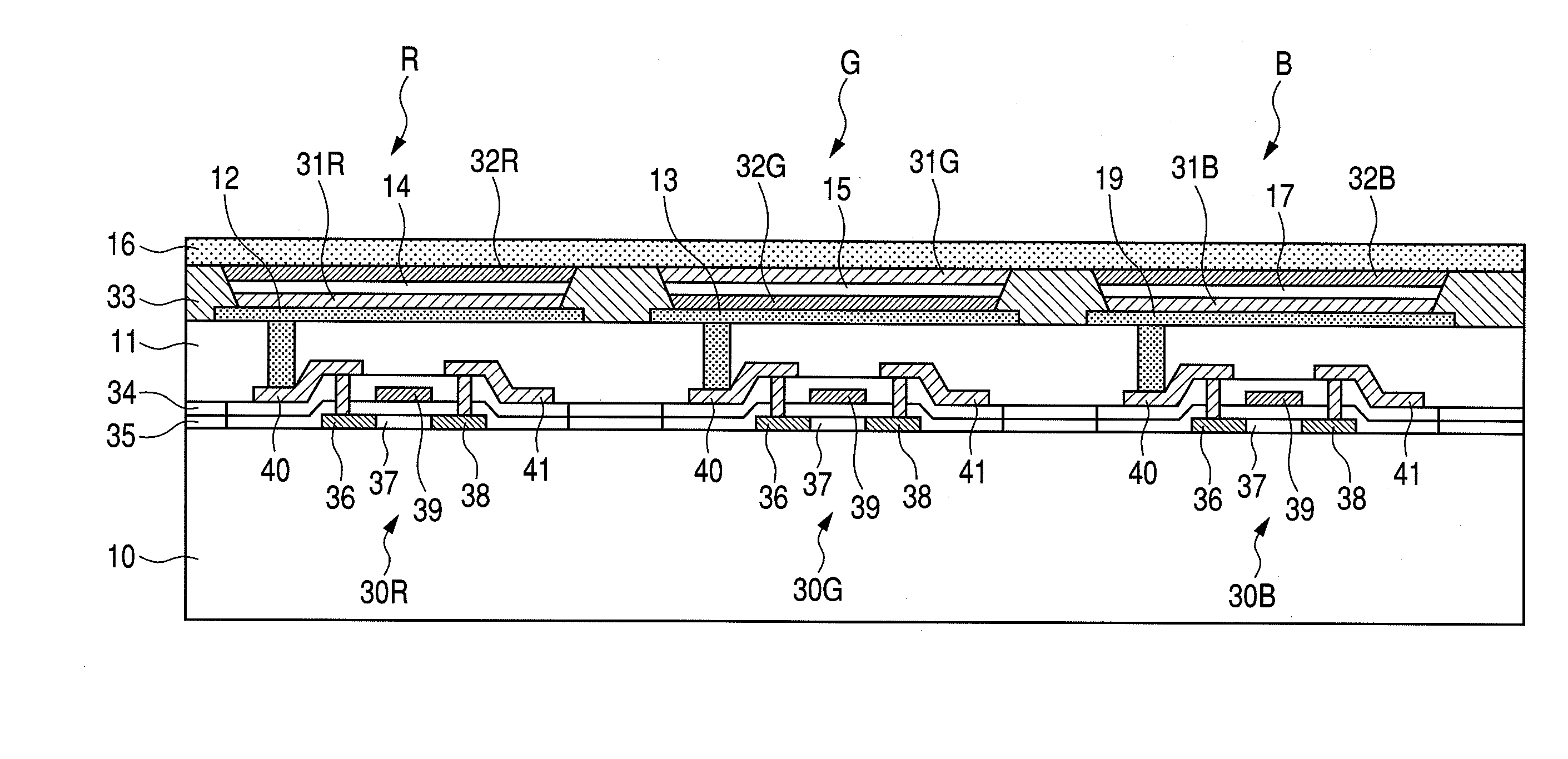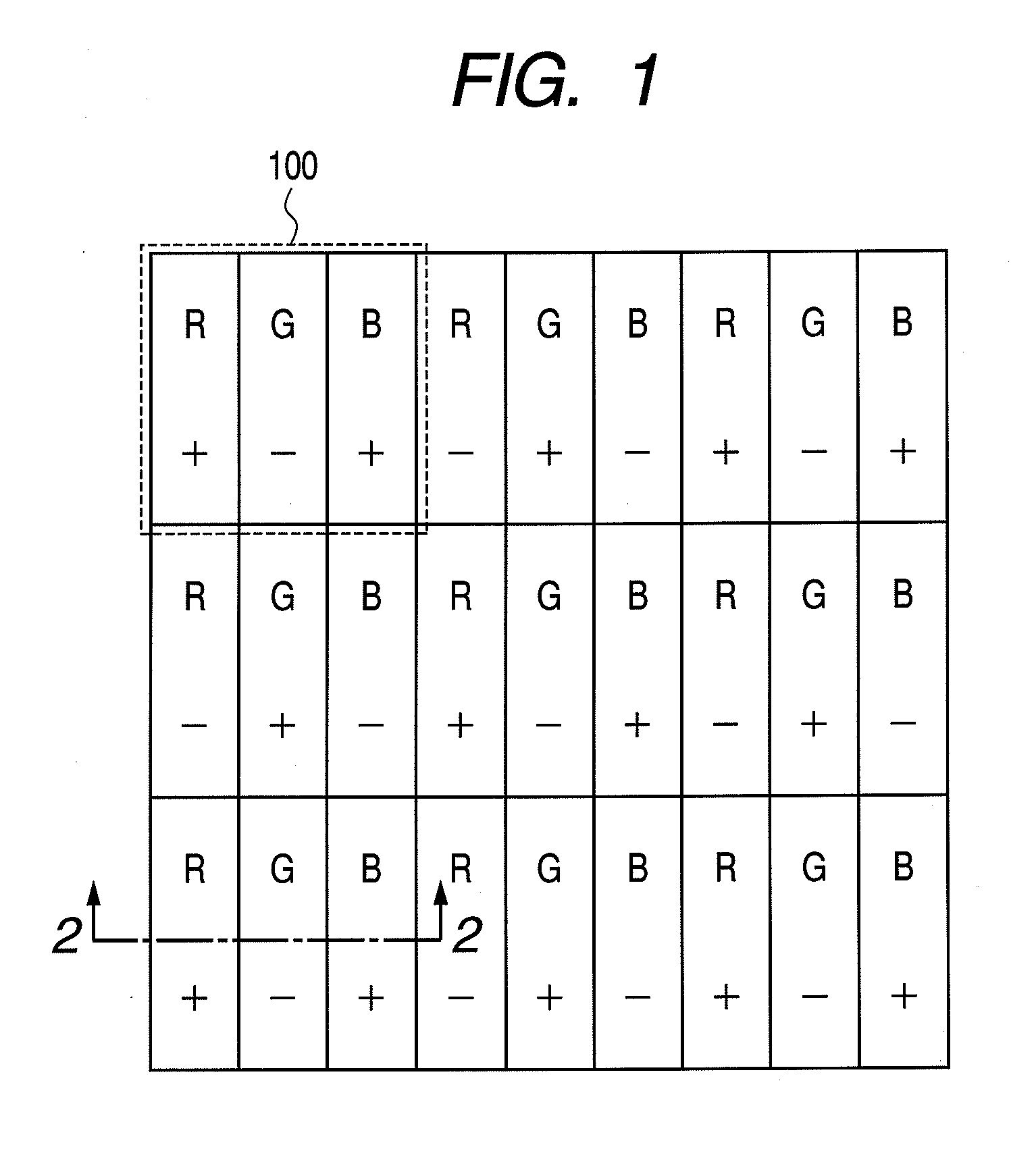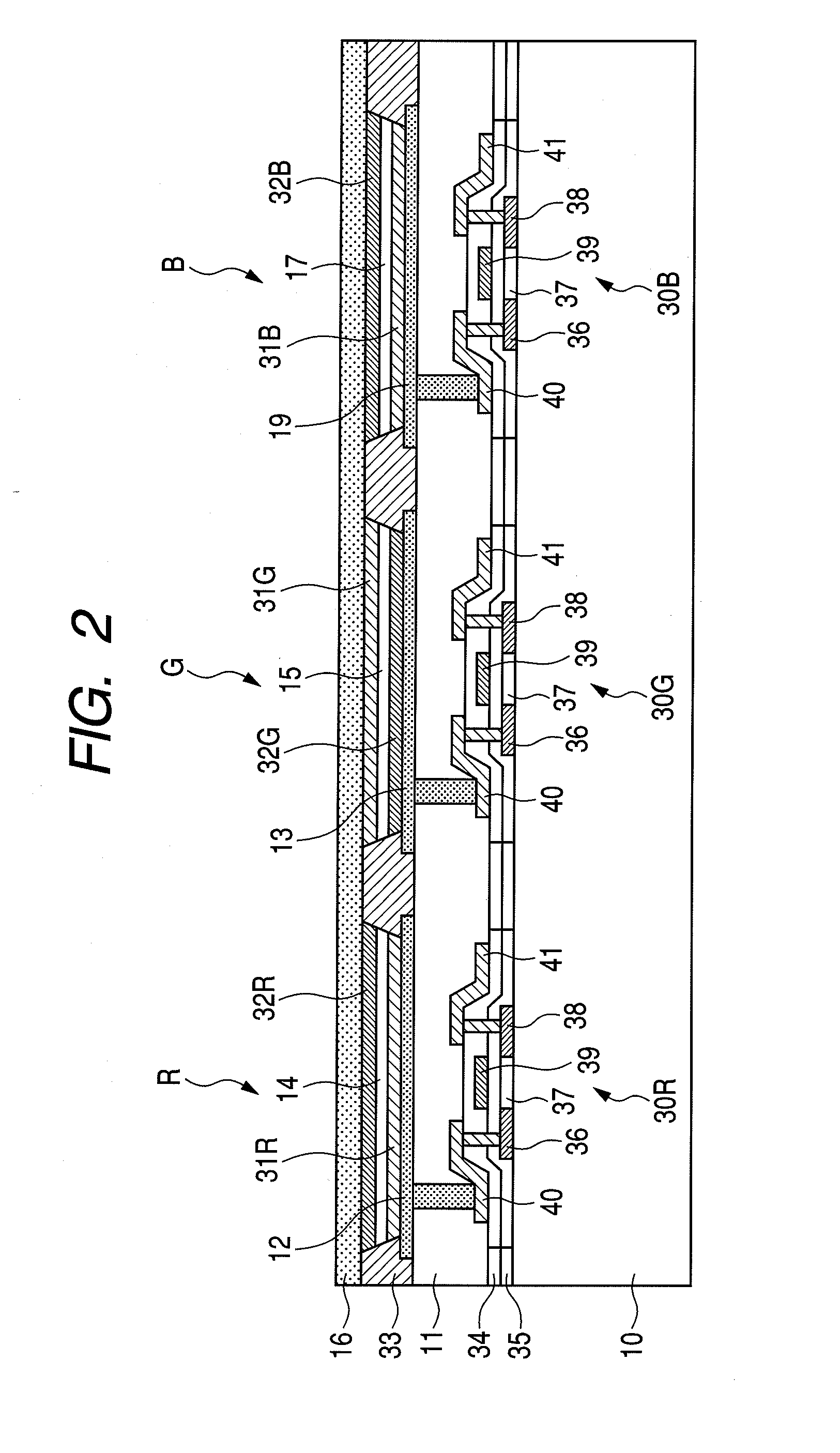Light-emitting apparatus
a technology of light-emitting devices and auxiliary wiring lines, which is applied in the direction of electric lighting sources, electric light sources, solid-state devices, etc., can solve the problems of difficult widening the width of the auxiliary wiring lines formed on the same layer as the first electrode, affecting the efficiency of light-emitting devices, and reducing the resistance value of the second electrode to a desired value, etc., to achieve the effect of reducing shading, simple structure and low cos
- Summary
- Abstract
- Description
- Claims
- Application Information
AI Technical Summary
Benefits of technology
Problems solved by technology
Method used
Image
Examples
first embodiment
[0030]FIG. 1 illustrates an example in which a light-emitting apparatus according to a first embodiment of the present invention is used as a display. A pixel 100 is composed of three subpixels, R, G, and B, which include organic EL light-emitting devices of three different colors, red (R), green (G), and blue (B), respectively.
[0031]FIG. 2 is a cross-sectional view of a single pixel 100 taken along line 2-2 of FIG. 1.
[0032]The R subpixel is driven by a thin film transistor (TFT) 30R. The R subpixel includes, on a lower electrode 12 connected to a drain electrode 40 of the TFT 30R, a hole injection layer 31R, a light emission layer 14, and an electron injection layer 32R which are stacked in the mentioned order and covered with an upper electrode 16.
[0033]The G subpixel next to the R subpixel is driven by a thin film transistor (TFT) 30G. The G subpixel includes, on a lower electrode 13 connected to a drain electrode 40 of the TFT 30G, an electron injection layer 32G, a light emissi...
second embodiment
[0051]A pixel arrangement of FIG. 4 is a modification of the first embodiment in which the three subpixels R, G, and B of the pixel 100 have such layer structures that set the direction of a certain direction current ((+) connection or (−) connection) of one subpixel reverse to that of its adjacent subpixel, while the direction of the certain direction current ((+) connection or (−) connection) of a subpixel of one color in a pixel is identical to that of a subpixel of the same color in its adjacent pixel. In FIG. 4, the G light-emitting device alone is connected in the (−) direction whereas the R and B light-emitting devices are connected in the (+) direction.
[0052]This embodiment varies the direction in which an organic EL device is electrically connected to the common electrode (Vc) from one color to another. Organic EL devices separately applied with their color R, G, and B may thus exert the effects of the present invention without increasing organic EL film formation steps in ...
third embodiment
[0054]A subpixel arrangement according to a third embodiment of the present invention is illustrated in FIGS. 5A and 5B.
[0055]In this embodiment, the pixel 100 is formed of two subpixels 100a and 100b, which emit light of two different colors at different points in time. FIGS. 5A and 5B illustrate the colors of light that the subpixels 100a and 100b emit in two different subfields. Those two subfields are actually combined into one frame of image.
[0056]The subpixel 100a emit red (R) light and blue (B) light alternately. The subpixel 100b emit green (G) light and blue (B) light alternately. The subpixels 100a and 100b are arranged in a fixed pattern, and the pattern is cyclically repeated in the row direction and the column direction.
[0057]In the example of FIGS. 5A and 5B, the subpixel 100a and subpixel 100b of a single pixel take turns in emitting blue light. The pixels 100a and 100b do not emit red light and green light in combination, and do not emit blue light simultaneously.
[00...
PUM
 Login to View More
Login to View More Abstract
Description
Claims
Application Information
 Login to View More
Login to View More - R&D
- Intellectual Property
- Life Sciences
- Materials
- Tech Scout
- Unparalleled Data Quality
- Higher Quality Content
- 60% Fewer Hallucinations
Browse by: Latest US Patents, China's latest patents, Technical Efficacy Thesaurus, Application Domain, Technology Topic, Popular Technical Reports.
© 2025 PatSnap. All rights reserved.Legal|Privacy policy|Modern Slavery Act Transparency Statement|Sitemap|About US| Contact US: help@patsnap.com



